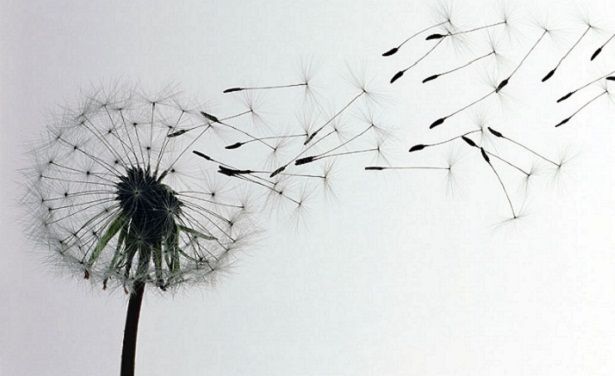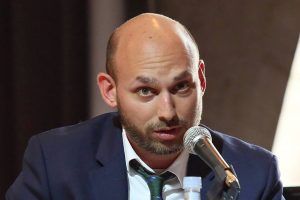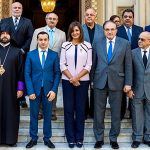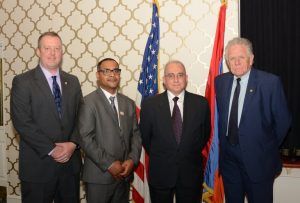50th anniversary of the Diaspora Committee: Interview with Artur Navasardyan

The Committee on Cultural Relations with Diaspora Armenians is celebrating its 50th anniversary. On this occasion, “Hayern Aysor”’s correspondent sat down for an interview with the Committee’s longstanding member, merited journalist Artur Navasardyan.
“Hayern Aysor”: Mr. Navasardyan, I congratulate you on the anniversary. You have served on the Committee for many years and you have been a devoted member. Could you please tell us about the activities that you have carried out as a member of the Committee?
Artur Navasardyan: I have studied philology, history and philosophy. I have worked for that structure marked by its long history, the best traditions and pro-national activities from the very first years of its establishment until its disbandment. I did take a sabbatical since I was being persecuted by the then State Security Committee (KGB). So, I quit my job and continued to work at the State Institute for the Improvement of Teachers. After a short while, I started working for the Committee again and spent the best years of my prime.
“Hayern Aysor”: Of course, you have had the opportunity to meet remarkable Diaspora Armenians…
A. N.: Yes, I have been lucky to meet individuals such as Levon-Zaven Surmelian, William Saroyan, Mushegh Ishkhan and many other remarkable individuals. I have also met great Armenians in Armenia. Those meetings are some of the great moments in my life. I have attended several important events that haven’t been recorded anywhere (there were no technologies back then). They’re all in my head. That’s why I have written my memoirs on paper for the generations to read. I have also written several articles.
“Hayern Aysor”: Mr. Navasardyan, who do you remember the most?
A. N.: That person, the great intellectual and the great Armenian is the founder of the Committee on Cultural Relations with Diaspora Armenians, historian, philologist Vardges Hamazaspyan. He didn’t have a background in diplomacy, but it’s safe to say that he knew the best way of diplomacy in Armenia. Hamazaspyan opened the door to the Diaspora and built a bridge between Armenia and the Diaspora. I could write a monograph about him. He wasn’t an ordinary person. At the time, the center was in Moscow, but our Committee was a committee that was independent and had many privileges. At the time, Georgia, Belarus, the Near Baltic republics, Ukraine and even Chechnya had Diasporas. Hamazaspyan was able to solve many issues by maintaining close ties with Diaspora Armenians. He would intimidate the Central Committee of the USSR with the Armenian Diaspora. Hamazaspyan made more visits abroad than then Minister of Foreign Affairs Gromiko. Vardges Hamazaspyan wasn’t held accountable to anyone. He was a member of the Communist Party of Armenia and the chairmanship of the “Родина” (Rodina) Company. Every year, our Committee would prepare a 100-200 page report (that said a lot about how hard we worked), while the reports of other republics were barely 10-15 pages long. Our Committee would participate in all the events held in the Armenian Diaspora. I think you can imagine what a powerful structure the Committee on Cultural Relations with Diaspora Armenians was.
“Hayern Aysor”: It’s as if the Committee on Cultural Relations with Diaspora Armenians is the “forefather” of the RA Ministry of Diaspora. What kinds of relations have you established with the Ministry of Diaspora since its establishment? Are you a friend of the ministry, or more of an observer?
A. N.: A couple of years ago, Mrs. Hranush Hakobyan announced a contest for the logo of the RA Ministry of Diaspora. I told her that the Committee already had a logo that painter Martiros Saryan had created and that there couldn’t be a better one, and the minister accepted it. Hranush Hakobyan is truly doing a tremendous amount of work. Since the establishment of the ministry, she has been advising her employees to address me with issues related to the Armenian Diaspora, ask and learn, and I have gladly answered all their questions and have given them advice, if necessary. I respect Mrs. Hakobyan because after the disbandment of the Committee, all Armenians forgot about the Armenian Diaspora. Hranush Hakobyan helped all Armenians focus on the Armenian Diaspora once again.
“Hayern Aysor”: How many divisions did the Committee have? How many employees? How was it funded?
A. N.: Let me start with funding. In rubles, our Committee had 13 million 500 thousand rubles. At the time, no other ministry had that much money. We didn’t have financial difficulties. We had international bank accounts that were under the supervision of patriotic Armenians. We didn’t even provide Moscow with reports on those sums. If any institution, say, the Academy of Sciences, needed some kind of device, the Academy would address us with a request, and we would contact the country maintaining our exchange rate and tell them to order a product from some firm, pay cash and give us a report. We weren’t held accountable to anyone. The second great member of our Committee was Karlen Dallakyan. He was very smart and was fluent in Armenian, Russian and English. Thousands of people attended Hamazaspyan’s funeral, and Dallakian read an obituary that could be considered the climax of mastery in speech. He gave a historical evaluation of Hamazaspyan, stating that Hamazaspyan’s contributions were not only marked by his efforts for the Committee on Cultural Relations with Diaspora Armenians, but also the efforts that he made across the country. Our Committee served as the mediator between the Armenian Diaspora, the Government of Armenia and the Soviet Union.
“Hayern Aysor”: How long did the Committee exist? When, how and why did it cease to exist?
A.N.: The Committee had three leaders, two of which were immense intellectuals whom I already mentioned. The third leader came and did the opposite of what the previous two did. He disbanded the Committee. Our Committee was established in 1964 by a state decree and was founded by great Armenians such as Martiros Saryan, Hrachya Kochar, Eduard Mirzoyan and the president of the Union of Artists of Armenia. Armenians in the Diaspora saw this, and that’s why they trusted us. First, there were divisions for cultural relations with Diaspora Armenians and different committees, but they were short-lived. After a year and a half, we were provided with the diagonal building of Yerevan Cinema where the Repatriation Committee was based. Later, we were given another space. There were 135 employees. After a while, we were divided into sections, including the Europe section, the East section (Asia, Africa) and the Americas section. We also had a press department that would deliver Armenian newspapers of the Diaspora. Progressive newspapers were sold in unlimited copies at newsstands. The Committee legally ceased to exist in 1998, but it was a non-governmental organization and the government had no right to eliminate it by a decree. Vazgen Sargsyan praised our Committee and attached importance to its role. The last chair of the Committee was Jivan Movsisyan, who now works at the Armenian Embassy in Kiev. Vardan Oskanyan called him to the Ministry of Foreign Affairs and created the Diaspora Department, which was disbanded during Edward Nalbandyan’s term five years ago. After that, Mrs. Hakobyan assumed the obligation and hired new specialists. There were many reactions from Armenians abroad after the disbandment of our Committee. We would receive sentimental letters.
“Hayern Aysor”: Mr. Navasardyan, what happened to the 135 employees?
A. N.: They were professionals who were in high demand and were receiving many offers. It’s safe to say that the new leader destroyed everything. We were removed from the Committee’s building and were taken to a building with some rooms near the old stadium. We had a fund that nobody knew about. It was at our disposal and we survived until 2002 (we would receive salaries from that fund). Here I would like to express my gratitude once again to Mrs. Hranush Hakobyan, who was the Minister of Social Security at the time. The government granted the building to her, and she allowed us to stay in the building.
“Hayern Aysor”: Which state organizations do your colleagues from the Committee work for today?
A. N.: There are colleagues who are like the Last Mohicans. One of them lectures at Yerevan State University. Kozmoyan, who carried out large-scale activities in Beirut, is a brilliant and experienced diplomat. When the Committee was disbanded, he created an organization that played the role of the Committee.
“Hayern Aysor”: Who undertook the initiative to hold an event dedicated to the 50th anniversary of the Committee on Cultural Relations with Diaspora Armenians?
A. N.: Once again, we thank RA Minister of Diaspora Hranush Hakobyan for that.
“Hayern Aysor”: You have such great potential, and I noticed that during our interview. Wouldn’t you like to publish a book devoted to the Committee on Cultural Relations with Diaspora Armenians?
A. N.: If I turn my thoughts, memories and articles into a book, that book will become the encyclopedia of the Diaspora. I have more than 100 articles, some of which have been published in different countries. I am also an educator and have taught Armenian history, as well as philosophy, Diaspora studies and religion and have given Western Armenian language lessons. As far as the Committee is concerned, I know so many things that nobody else knows. I am 75 years old. Due to my merit and on the occasion of my birth anniversary, the Union of Journalists of Armenia granted me a gold medal. As for books, I won’t have time. Let the generations read my articles. They are instructive and interesting.
“Hayern Aysor”: What is the one thing that you would like to see the RA Ministry of Diaspora change in its working style?
A.N.: I would like to see the employees refer to the books in our Committee’s rich archive…Years ago, I saved that archive from being burned. I took it to the National Archives. I would advise the ministry to open a special department and have those conducting research on the Armenian Diaspora to refer to that archive. They can learn a lot. The Department of Diaspora Studies provides materials related to the history of the Armenian communities of the Diaspora, but the students must learn in practice by studying our archive, which is like a whole encyclopedia.
“Hayern Aysor”: Thank you, Mr. Navasardyan. One can even learn a lot from this interview.
Karine Avagyan




 Արևելահայերեն
Արևելահայերեն Արևմտահայերեն
Արևմտահայերեն Русский
Русский






